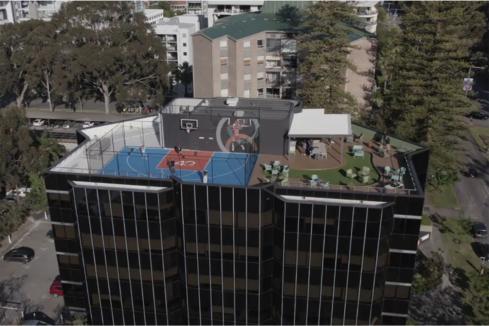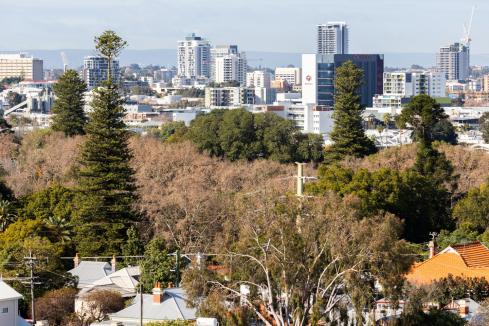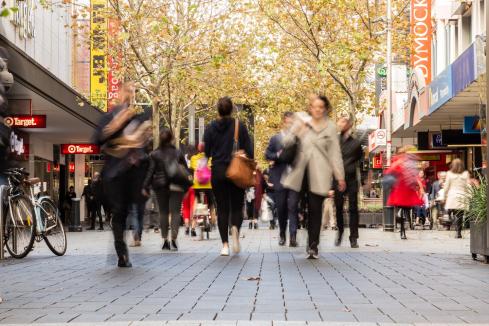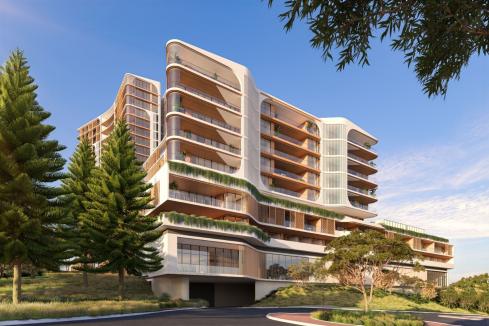Industry and government are using planning initiatives and design to take the heat out of infill development in Perth’s suburbs.


Western Australia is home to one of the largest suburban sprawls in the country, with residential housing lining more than 150 kilometres of coastline between Mandurah and Two Rocks.
But the economic and environmental issues associated with the sprawl, coupled with the need to cater for a population of 3.5 million by 2050, have prompted the WA government to act.
In recent years, it has embarked on a major overhaul of planning legislation to guide quality, high-density development in established suburbs around existing infrastructure and public services.
The government has imposed density targets across suburban Perth in a bid to encourage half of the 800,000 new homes needed over the next three decades to be built within the city’s existing footprint.
There have been a wave of mediumdensity and high-rise apartment developments, but some sections of the community have been less impressed by the idea than others.
Opponents of high-rise development have raised concerns about its impact on existing properties and their value, privacy, overshadowing, increases in traffic congestion and loss of amenity.
Industry believes the delicate balance between increasing density and maintaining amenity can, and is, being achieved through enhanced planning and design measures; guided by the state government’s Design WA legislation reform initiative.
In 2019, the state government introduced the Design WA initiative, enacting new policies concerning design codes for residential apartments.
The reforms have set a benchmark for the delivery of quality housing and helped to shift public perception, with many now recognising well-considered new development often brings with it amenity upgrades and services, including shops, cafes, childcare centres and offices.
The Grove
There are few places where the move to increase density has proved more controversial than in Perth’s affluent western suburbs, where noisy opposition and planning disputes have been recurring issues during local government elections.
According to Knight Frank’s most recent residential review, 1,175 apartments and townhouses are under construction in the Perth metropolitan area.
Though most are slated for the suburbs immediately surrounding Perth’s CBD, almost a third are being built in the leafy western suburbs; many of which are characterised by renovated heritage homes and tree-lined streets.
In 2019, Subiaco-based architectural firm MJA Studio spearheaded the design of one of the largest developments in the western suburbs’ history – The Grove Residences.
Paul Blackburne’s $300 million redevelopment involves the construction of 247 apartments across a 1.5-hectare site at the intersection of Stirling Highway and Airlie Street, where the suburbs of Claremont, Cottesloe and Peppermint Grove meet.
MJA Studio design director Jimmy Thompson admitted the proposal received a mixed response when it was first unveiled, but said most apartment purchases were made by local residents looking to downsize and remain in their local community.
Mr Thompson attributes the negative perception tied to high-rise development to poor performing multi-residential architecture of the 1960s through to the 1980s, which resulted in dwellings being crammed on to blocks, a loss of tree canopy and significant alterations to the character of local neighbourhoods.
“I think people recognise the need to increase density and support the design intent, but they just don’t want it next to them and they’re scared,” he said.
Architecture in context
For Mr Thompson, changing those perceptions and addressing the community’s concerns started with ‘context-driven’ architecture underpinned by a deep understanding of the past and current context of the neighbourhood.
“In terms of the materiality of the building and the built form, they really need to respond to past context and create a standard for future context,” he said.
“One thing we try to do is anticipate future development of neighboring sites.
"You’ve always got to look beyond the site you’re developing on and really anticipate how the development of neighbouring sites may negatively affect our residents.
“While you’re doing that, you’re also looking at the patterns of development in that street over the past century, including consistent setbacks, backyards or dimensions.”
Part of retaining the context involves the retention of native vegetation and the large trees of the western suburbs, according to Mr Thompson.
He emphasised that infill should not cost the neighbourhood its character.
This was a key consideration in The Grove development, which maintained a double setback typical of Peppermint Grove and incorporated a large public park and community garden, he said.
“That’s how you can balance retaining character with increasing density and amenity for the community,” he said.
“It’s about maintaining that consistency of story and narrative for future generations.
“It’s up to developers and architects to continue providing good quality housing that exceeds the expectations of the community, just to change some of those perceptions about what this type of housing is and who lives there, and that means better amenity and creating homes not flats.”
Planning for future
The balance between increasing density and maintaining the character of an area hinges on local governments updating planning schemes, in line with state legislation, and outlining where the largest concentration of density development should go.
High-rise development should be concentrated in close proximity to existing infrastructure and major transport links, Mr Thompson said.
“If you can get the density in areas where it makes sense, you remove the need for density in all of the neighbouring streets so that they can really retain their heritage and their mature trees,” he said.
To facilitate this, Urban Development Institute of Australia WA chief executive Tanya Steinbeck said it was critical local governments maintained up to date local planning schemes, many of which had not.
While acknowledging there would always be those people resistant to change, Ms Steinbeck said it was often the case some local governments had left their communities in the dark about infill expectations.
“Going through a rigorous community consultation process during local planning policy and scheme updates, in order to understand a broad perspective of community expectations and needs up front, is an important part of the local planning scheme development process,” she said.
“If these processes were undertaken by local governments in a timely manner, I think we would avoid some of the more controversial debates around individual proposals.”
The City of Vincent is among a suite of local governments to update its precinct structure plan in recent months, outlining plans to enable heights of between 18 and 23 storeys opposite Leederville train station, while maintaining heights of no more than three storeys along Oxford Street’s cafe strip.
City of Vincent mayor Emma Cole said the plan aimed to balance the need to increase density while preserving Leederville’s village character.
But it’s the transition between designated areas of high-density and medium-to-low density and how to navigate it that is proving to be a challenge.
Navigating transition
For the past 16 years, Subiaco-based architectural firm Klopper & Davis Architects has focused on high-end residential, large homes, additions, hospitality and heritage work.
But as it has grown, the company moved into apartment builds.
Director Sam Klopper, who has spent the past few years working with the state government to draft and test Design WA’s apartment codes and medium-density codes, said he understood the importance of high-quality design that responded to the environment and context.
Mr Klopper said he did not believe high rise to be more contentious in the western suburbs than elsewhere in Perth, but said residents tended to be more active.
“The comments are often the same – ‘we love the building, we’re just concerned about change’,” he told Business News.
“I think a lot of people now are considering the site, the context, the performance of the building and sustainability, whereas before strong design controls, that was kind of secondary to simply achieving commercial metrics.
“It’s just about that transition period, where the community is getting used to the idea of more density in areas where it’s appropriate.”
He said under modifications to the design codes, considerations once simply deemed good practice were made mandatory.
This backed developers investing in high-quality design and reduced the opportunity for cheaper, poorly designed buildings to undercut them in the market.
Mr Klopper agreed with Ms Cole, saying the real difficulty lay in navigating transition zones, where areas identified for more intense development blended with areas of medium-to-low density.
He said these areas required considered design responses, which were sensitive to adjacent landowners.
“That’s where things tend to get a little more contentious – the transition from higher to lower density,” he said.
“I think that’s what the industry is grappling with the most – is how you sensibly do those transitions.
“I think there is a sense that things are changing, but there are no changes through Design WA that are changing the zoning of areas and I think that’s really critical to get across.
“Sometimes that does mean taller buildings, but usually that is compensating for other areas.
“Good design starts with a concept explanation with the approval body, this can include the investigation of balancing increased setbacks, which are sensitive to adjacent owners with heights for a better design outcome.
“Those are the things that are difficult to understand.”
Recent trends
Two decades ago, there was a push to decrease the size of apartments but increase the number of apartments on a site.
But Mr Klopper said there had been a shift in recent years, with buyers demanding higher-quality apartments with sufficient storage space and more bedrooms.
The shift has meant a move away from bottom-end development trends and a greater emphasis on larger and higher-quality apartments.
The shift has ensured those transitioning from homes to apartments can do so comfortably, encouraging a more diverse range of people to live in apartments.
Another trend is architects championing excellence in environmental design, outcome being driven by the market.
Mr Klopper said more buyers were recognising that access to natural light and cross-ventilation was critical, as were user-friendly, large, open outdoor spaces.

















